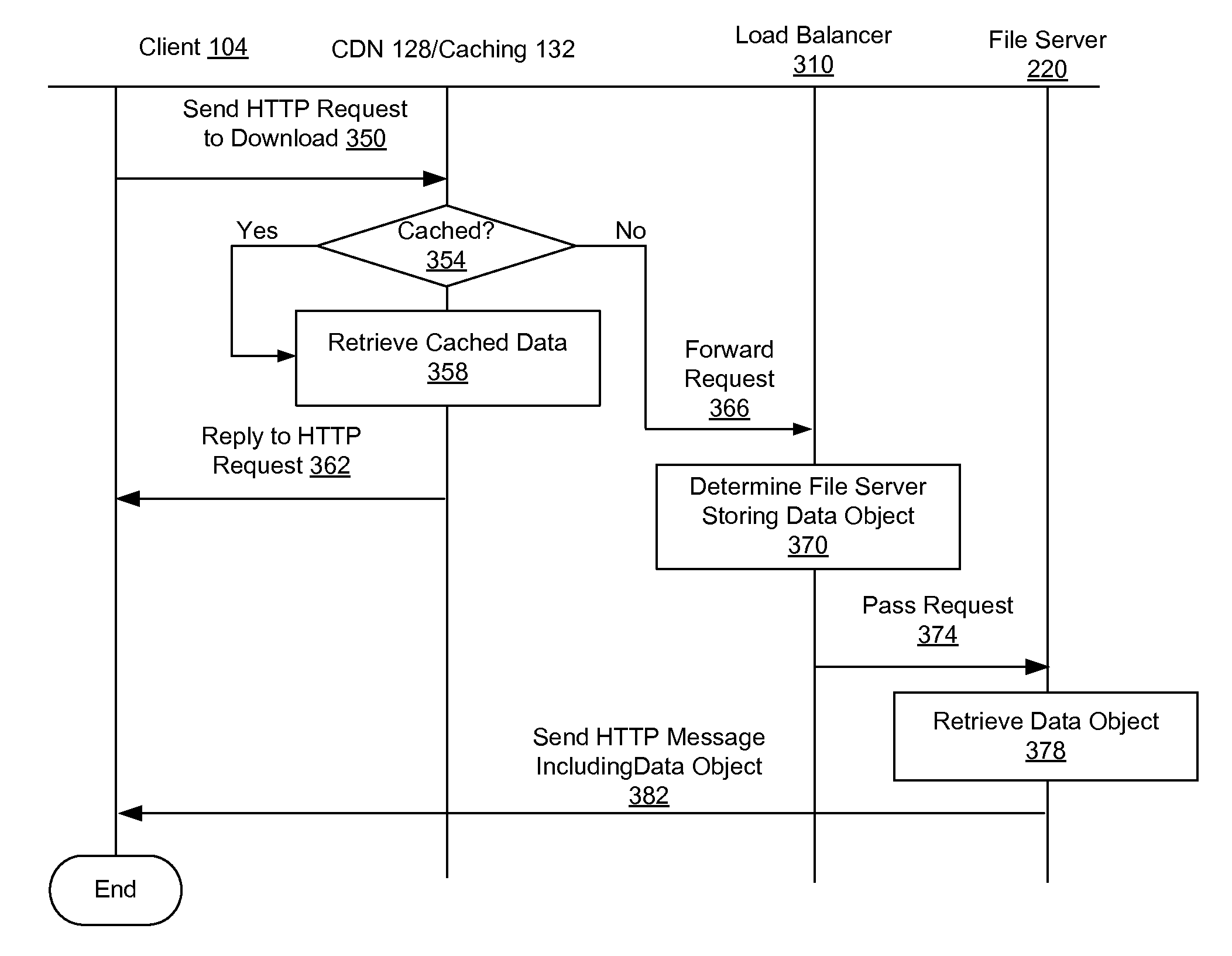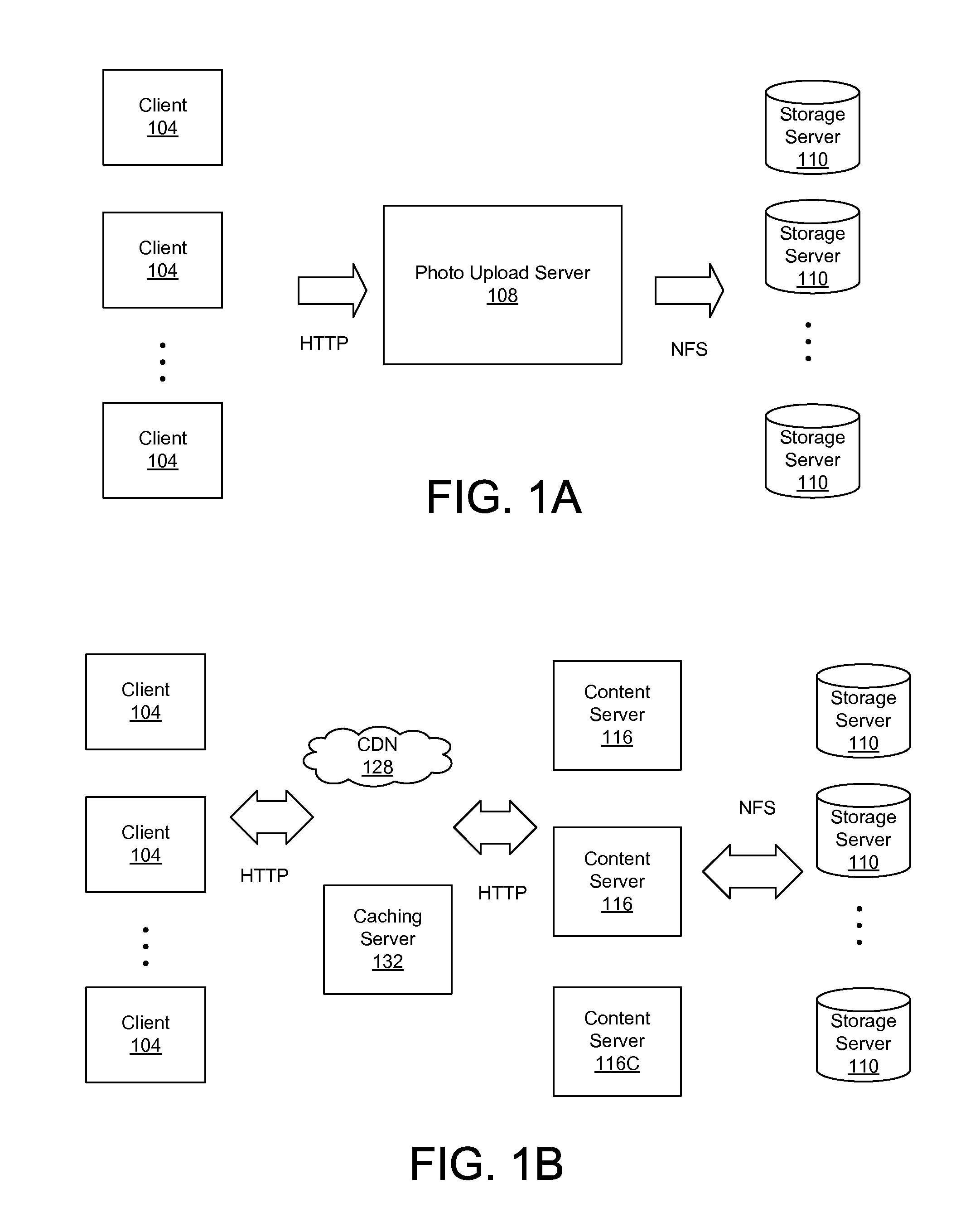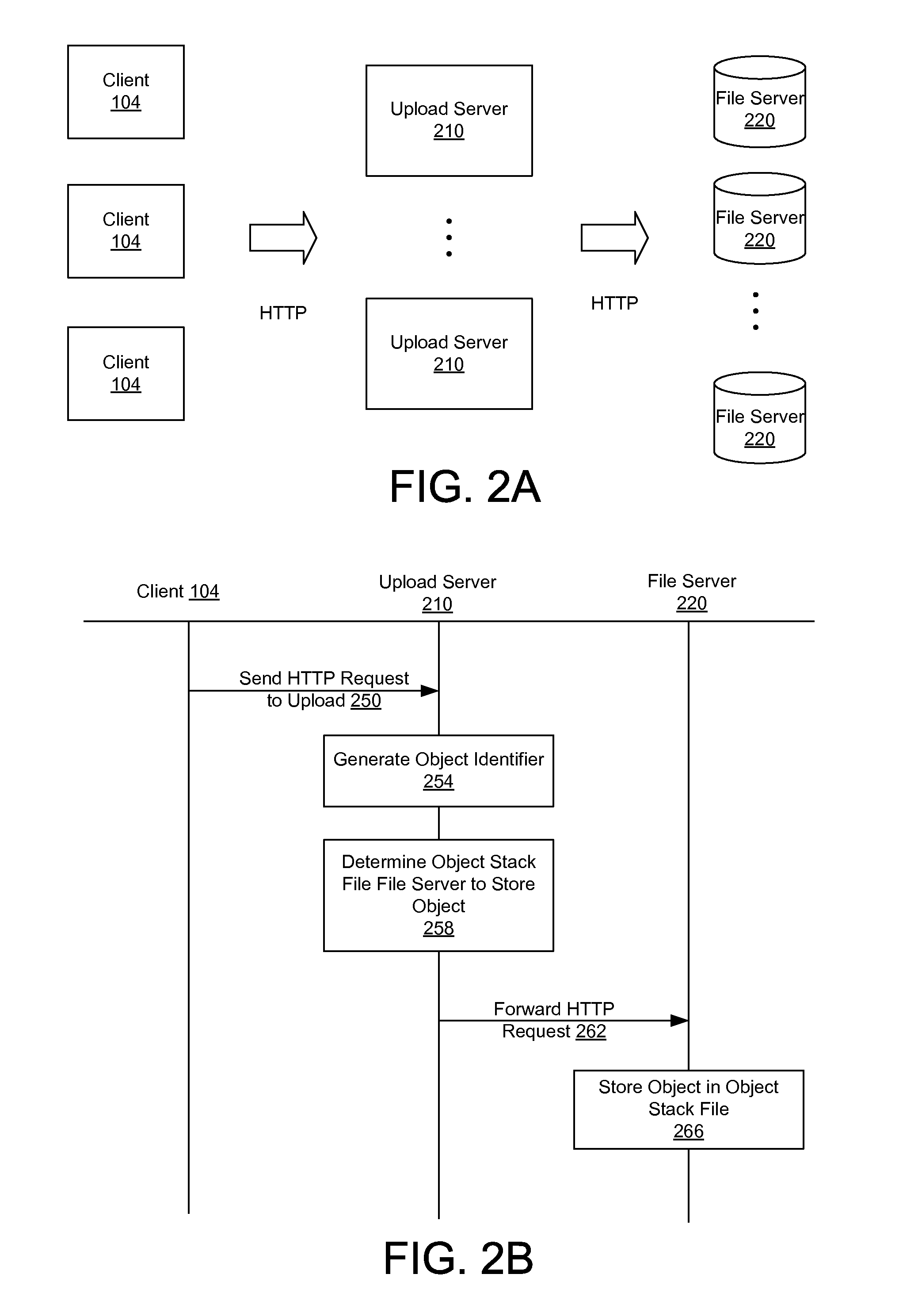Efficient storage and retrieval for large number of data objects
a data object and large number technology, applied in the field of efficient storage and retrieval of a large number of data objects, can solve the problems of increasing the retrieval time of data objects, exacerbated overhead of metadata, and metadata files that are typically too large to be held in primary storage, so as to reduce the number of files in secondary storage, reduce overhead, and reduce the effect of file number
- Summary
- Abstract
- Description
- Claims
- Application Information
AI Technical Summary
Benefits of technology
Problems solved by technology
Method used
Image
Examples
Embodiment Construction
[0025]Embodiments of the present invention provide a data object management scheme that stores a large plurality of small data objects in small number of large object stack file for storage in secondary storage (e.g., hard disks). By storing many individual data objects in a single object stack file, the number of files stored in the secondary storage is reduced by several orders of magnitude, from the billions or millions to the hundreds or so.
[0026]In one embodiment, an object stack file concatenates a large number of data objects together. Each object stack file has an associated index that stores metadata about the locations of the data objects in the object stack file. The minimized number of metadata fields for efficient storage results in a reduced index size. The reduced size of the index allows the index to be loaded and retained in primary storage (e.g., memory).
[0027]In another aspect of the invention, the logical and physical architecture of a system for storing and retr...
PUM
 Login to View More
Login to View More Abstract
Description
Claims
Application Information
 Login to View More
Login to View More - R&D
- Intellectual Property
- Life Sciences
- Materials
- Tech Scout
- Unparalleled Data Quality
- Higher Quality Content
- 60% Fewer Hallucinations
Browse by: Latest US Patents, China's latest patents, Technical Efficacy Thesaurus, Application Domain, Technology Topic, Popular Technical Reports.
© 2025 PatSnap. All rights reserved.Legal|Privacy policy|Modern Slavery Act Transparency Statement|Sitemap|About US| Contact US: help@patsnap.com



